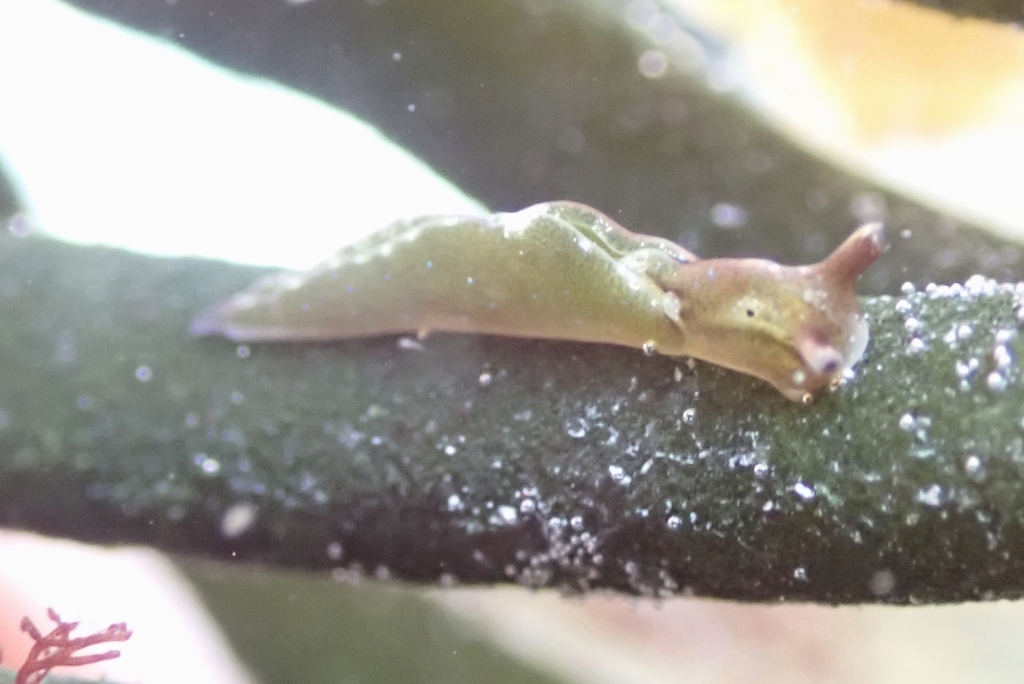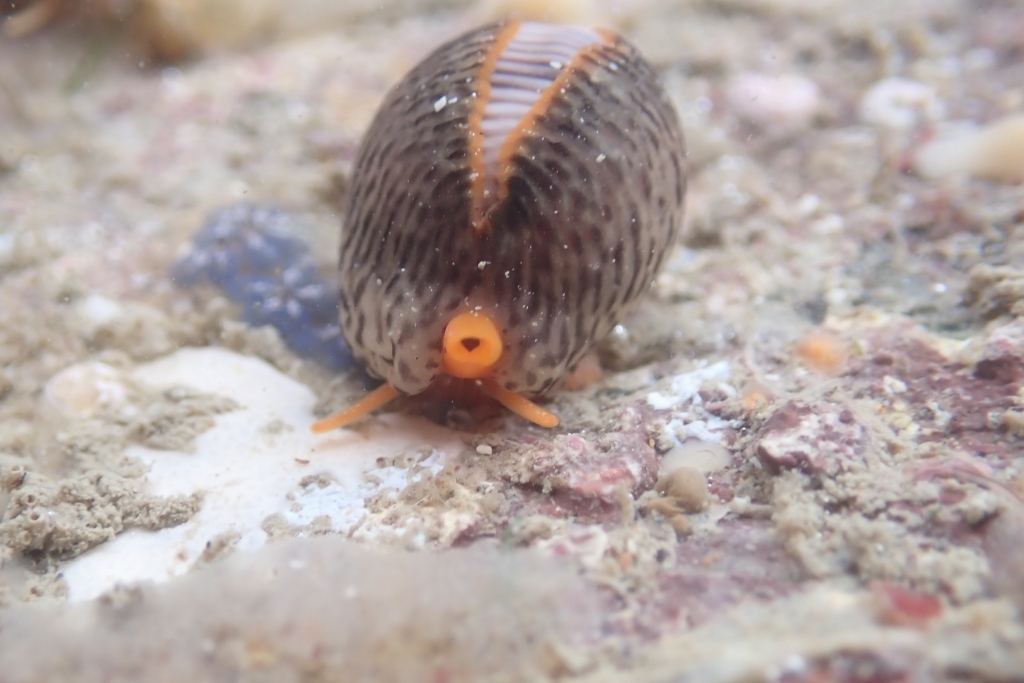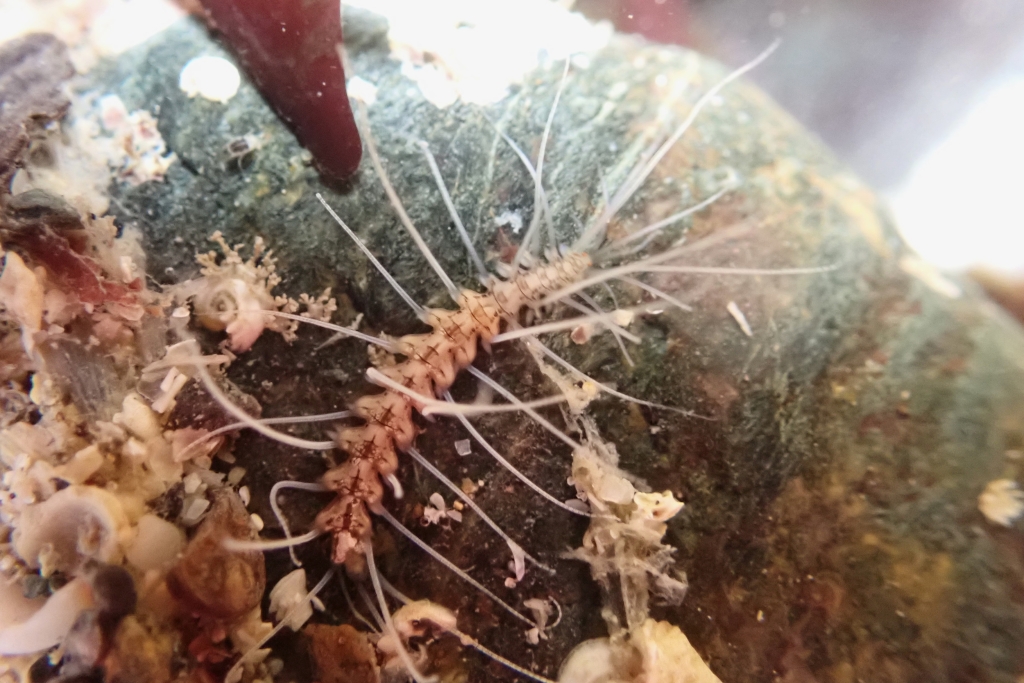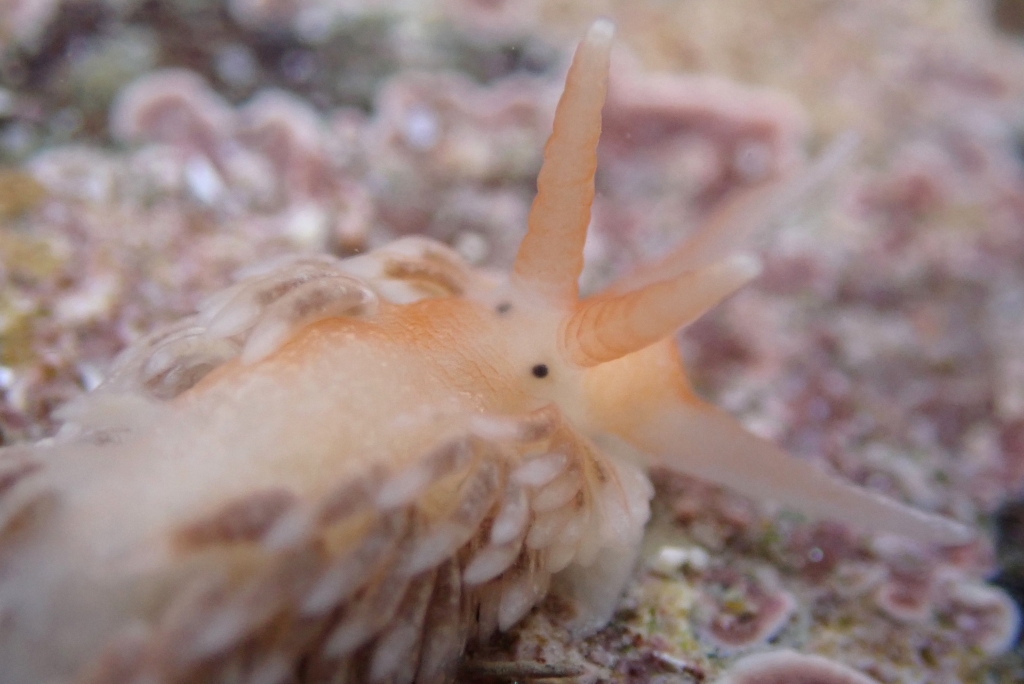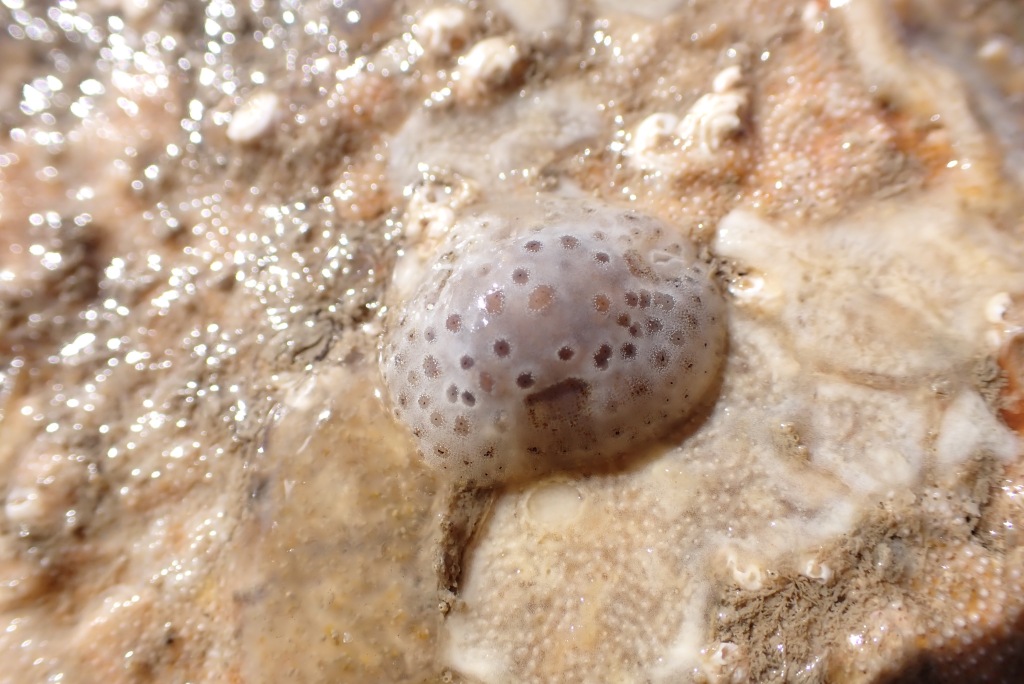It’s not exactly tropical, but we’re as far south as you can go on the UK mainland. The sun is shining and the clear water gives us a perfect view into the pools. After a morning of geological exploration at Kynance Cove, my family are treating me to some low tide rock pooling here at Lizard Point.
Apart from the chatter of seabirds and a distant hum of voices from the cafés perched on the cliffs, the beach is still, expectantly waiting for the tide to turn. Out in the bay, a bull grey seal rests upright in the water. He is ‘bottling’, his broad snout raised to the sun, keeping half a sleepy eye on the female that is snoozing closer to the shore. There are no boats here to disturb the seals, so they nap peacefully on and on, barely moving with the gentle rise of the swell.
The colours in the pools are as vivid as a royal procession. Neon green snakelocks anemones jostle for space with dusky pink coralline algae, yellow sea squirts and iridescent blue seaweed. Tiny rainbows play across the rocks.
Looking closer, we begin to notice other rock pool wildlife that is less keen to stand out, adopting the same bold colours as the seaweeds and encrusting animals to hide from predators. Tiny Elysia viridis sea slugs are everywhere, but they match the deep green of the codium seaweed perfectly.
These are the ‘solar powered’ sea slugs. They retain the seaweed’s chloroplasts, which carry on photosynthesizing in their bodies, making glucose to supplement the slugs’ diet.
A variety of animals are resplendent in shocking pinks and oranges, which allow them to disappear among rocks adorned in pink paint seaweed and forests of other red seaweeds. A European 3-spot cowrie (Trivia monacha) is roaming the rocks looking for sea squirts to eat.
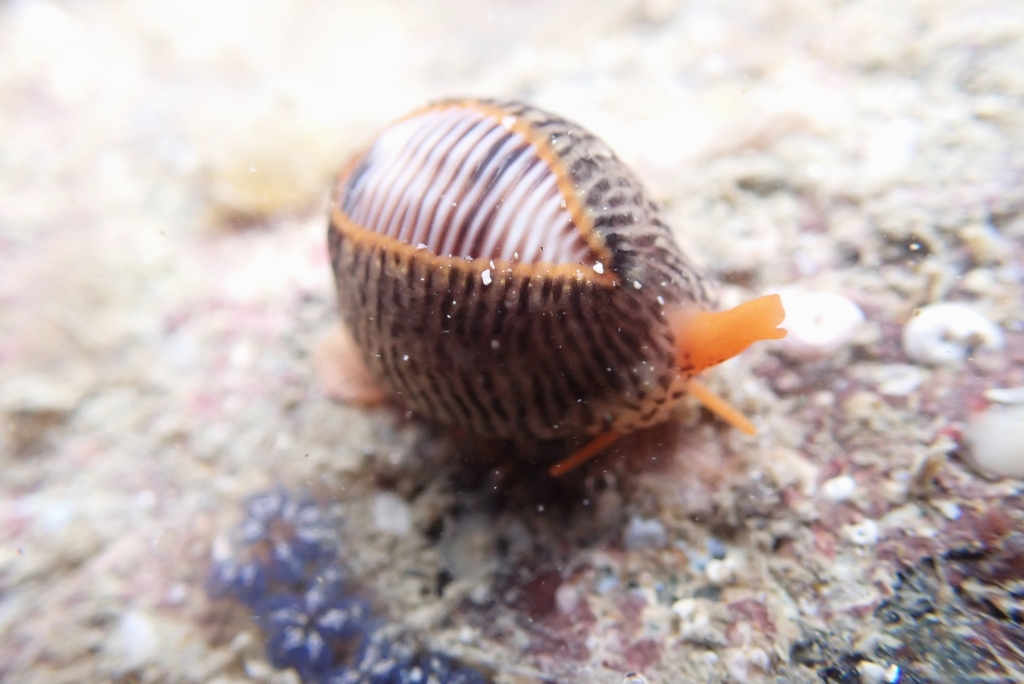
With its sunset-orange proboscis fully extended and its spotty mantle draped over most of its shell like a (fake) fur cape, it has the air of a glamorous Dalek.
Not to be outdone by the molluscs, there are some stunning worms in the pools. My favourite is this syllid worm, gliding across the rock with its enormously long, whisker-like appendages stretching and curling in all directions at once.
This feels like a spot that sea slugs should like. There is a variety of food on offer and no shortage of hiding places among the pools and boulders. Sure enough, under one rock I find two species hanging out together. They look like friends, but they are on separate missions. The great grey sea slug (Aeolidia filomenae) feeds on anemones, while the Berthella plumula – or feathered Bertha as I like to call it – eats sea squirts or sponges.

Junior, who excels at gathering people to look at things, has collected up an excited young boy and his grandfather to show them the pools. We all find things to show them – solar powered sea slugs, hermit crabs and a stalked jellyfish. While Junior is explaining barnacles to his fascinated audience, I wander down the shore, thinking I might find a starfish for him to show his new friend.

Sheltering under a small stone is a neat five-armed cushion star, but close to it, even more excitingly, there is a slender little Aeolidiella sp. sea slug.
Aeolid slugs vary in colour depending on what they have eaten, but there is something unusual about this one that I can’t place. It has a bit of a white ruff behind its head, but I’m not convinced it is the white-ruffed sea slug (Aeolidiella alderi) that I frequently see.
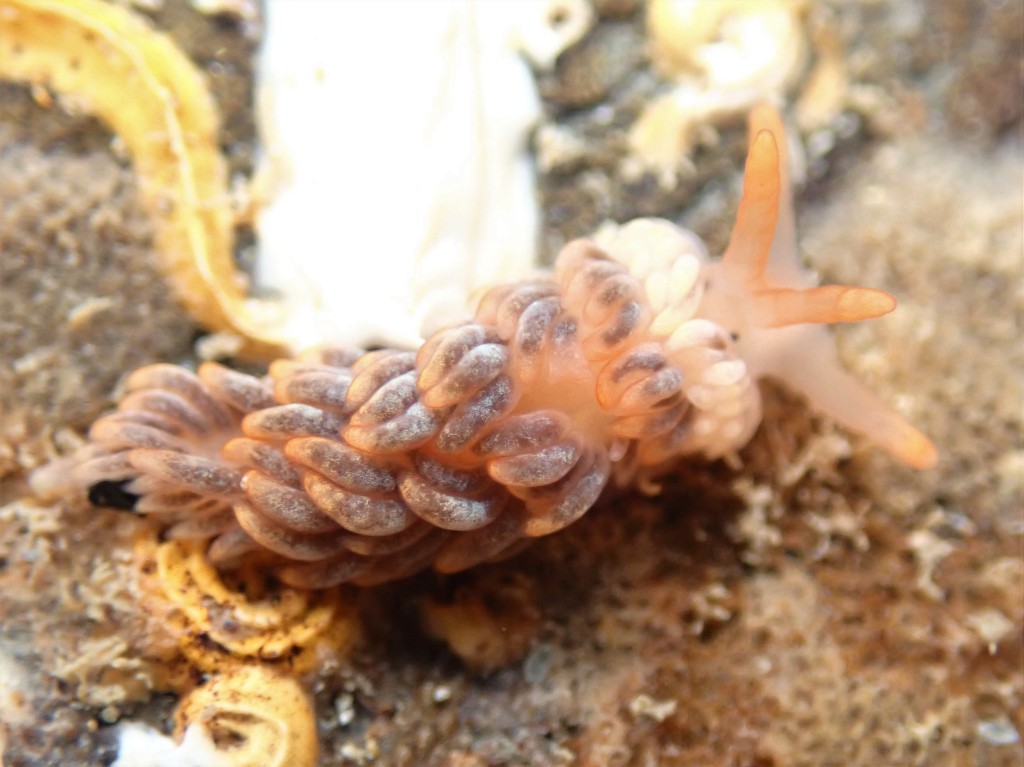
I take some photos. Zooming in, I soon ‘spot’ the difference; the difference is the spots! There are tiny white flecks on the slug’s body. I take photos in the pool before ensuring it is returned safely back under its stone.
Despite my rush to identify the slug (which I suspect is an Aeolidiella glauca) there are even more important things to do on the way home: like stopping for a saffron bun and ice creams at Roskilly’s, and visiting friends in Gweek.
Thanks to the wonders of expert Facebook groups and also the brilliantly helpful David Fenwick of Aphotomarine, I have confirmation the same day. Aeolidiella glauca has occasionally been recorded in this area before, but it’s a first for me. It may be more common in northern waters, but marine creatures rarely follow the rules. There are surprises everywhere and that is exactly what makes rock pooling so fabulous.
Whatever the weather, always stay safe in the rock pools. Follow my rockpooling tips to look after yourself and the wildlife on the shore.
This website is a labour of much love and the content is available for free to everyone. My wonderful readers often ask if there is a way to support my work. You can now ‘buy me a coffee’ through my Ko-fi.uk page. (Just click donate and you can set the amount to pay by PayPal). Thank you!




